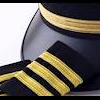
Sign in to follow this
Followers
0

Thrust limiter
By
Johan_Dees, in FSX/FSX-SE Aircraft and Panel Design Forum - How To


By
Johan_Dees, in FSX/FSX-SE Aircraft and Panel Design Forum - How To